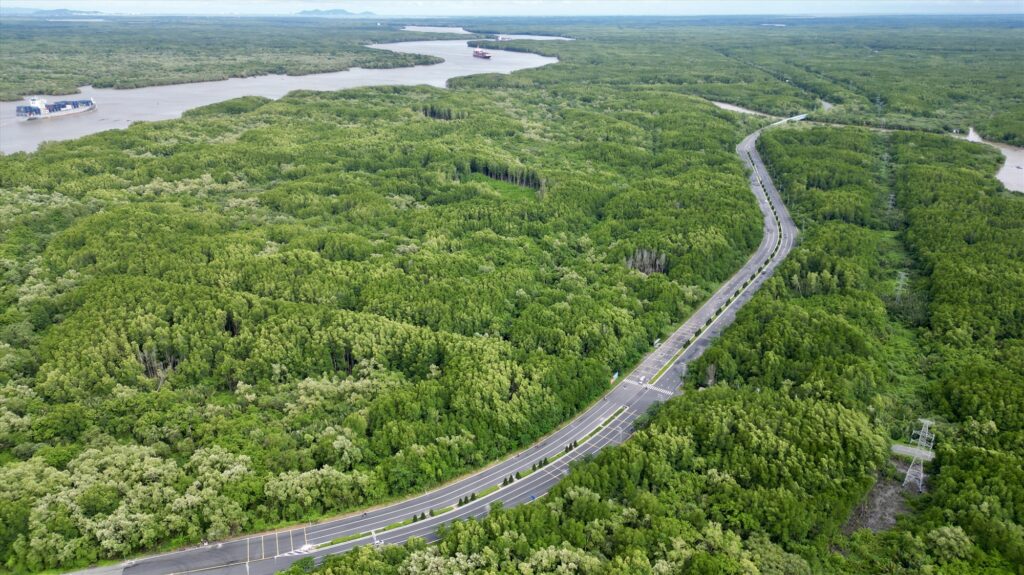
For first-time cyclists, embarking on a day trip from the bustling streets of Ho Chi Minh City to the tranquil Can Gio Island offers a perfect blend of adventure, scenic beauty, and cultural exploration. This guide will walk you through every step—from preparing for the journey to navigating the island’s scenic roads—ensuring that you’re fully prepared and excited for this unforgettable cycling experience.
Where Is Can Gio Located?
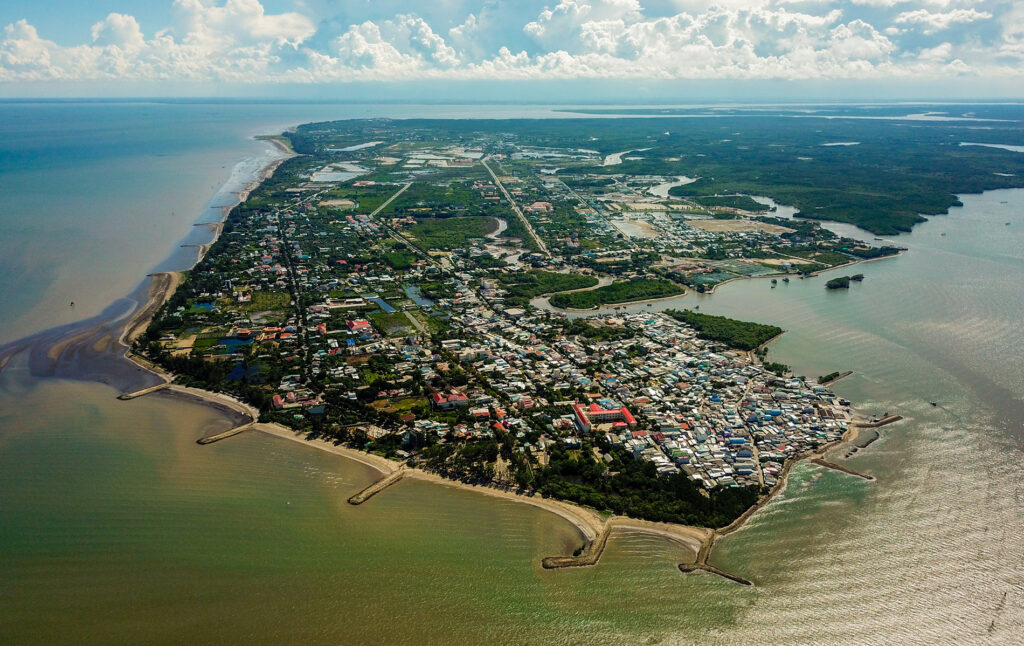
Can Gio is a coastal district situated about 45 kilometers southeast of Ho Chi Minh City. Often referred to as the “green lung” of Saigon, it is celebrated for its rich biodiversity, including vast mangrove forests, saltwater swamps, and an array of wildlife. In 2000, UNESCO recognized Can Gio as a Biosphere Reserve, highlighting its ecological significance. This protected area supports diverse ecosystems, providing a haven for countless species of plants and animals, making it a key destination for nature lovers.
Does Can Gio Belong to Ho Chi Minh City?
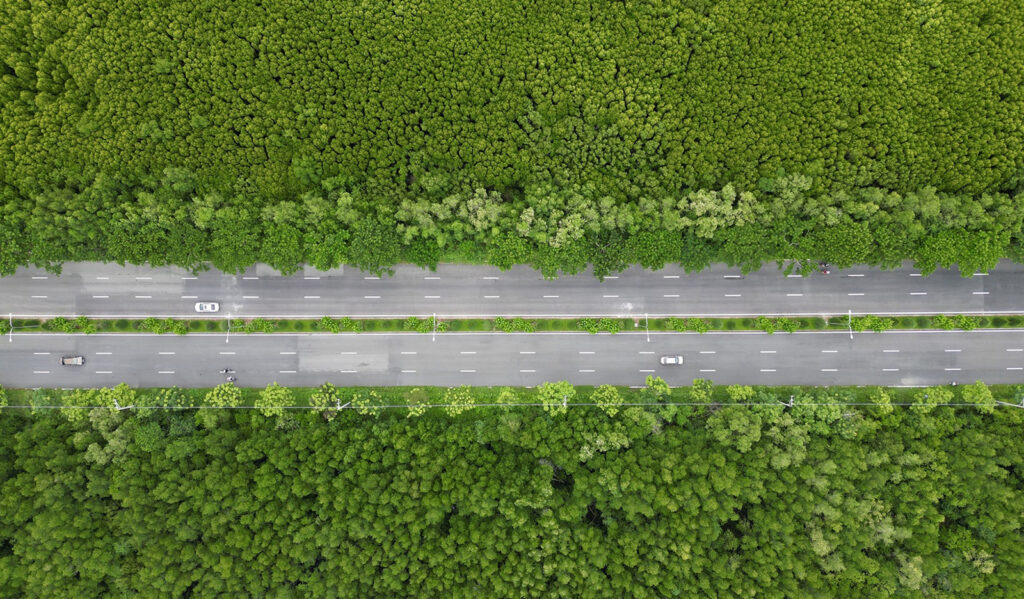
Yes, Can Gio is part of Ho Chi Minh City, though it feels worlds apart from the urban environment. A visit to Can Gio offers a peaceful retreat from the city’s fast-paced life, making it a perfect escape for those who seek tranquility. For cyclists, it’s a rare opportunity to explore Vietnam’s natural beauty while connecting with the local environment. Whether you’re looking for adventure or a calm ride through nature, Can Gio serves as the ideal destination for a cycling day trip.
Click to see Can Gio on the map.
How to get to Can Gio from Ho Chi Minh city?
1. By Ferry:
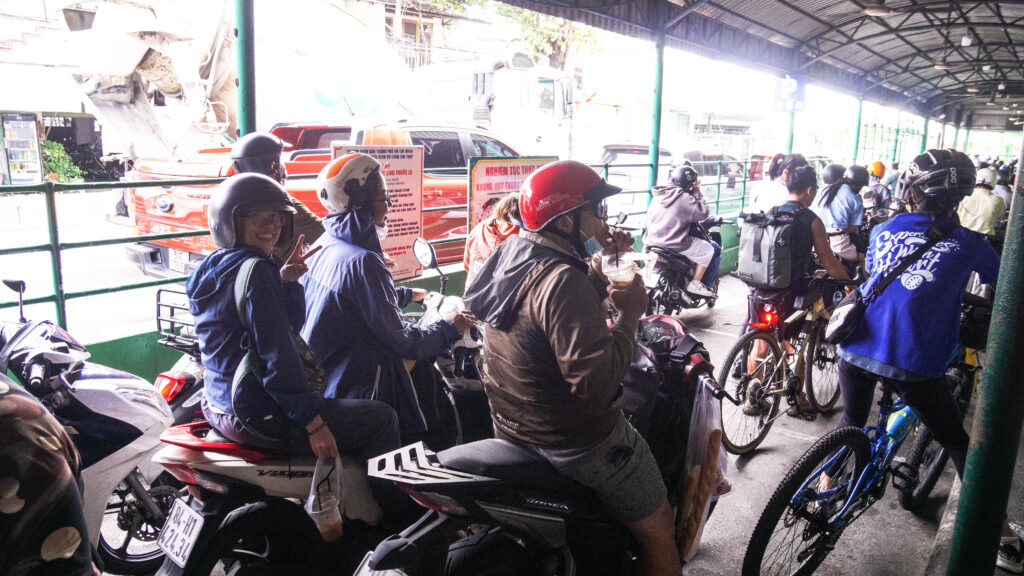
Currently, all visitors to Can Gio must take a ferry. Starting from the center of Ho Chi Minh City, follow the route towards Tan Thuan Bridge, then turn onto Nguyen Van Linh and Huynh Tan Phat before heading to Binh Khanh Ferry.
- Ferry Costs: There are 17 different fare levels (updated July 2022), with the cheapest being 2,000 VND (about $0.08 USD) for pedestrians and cyclists, and the most expensive being 220,000 VND (about $9.00 USD) for a single-trip ticket (for a tractor). The typical cost for motorcycles is 4,000 VND (about $0.17 USD), and for cars under 7 seats, it’s 23,000 VND (about $0.95 USD).
2. By Bus:
Bus No. 75 departs from 23/9 Park and heads to Can Gio, passing through popular streets like Pham Ngu Lao, De Tham, Tran Hung Dao, Ham Nghi, Ton Duc Thang, Nguyen Tat Thanh, and Huynh Tan Phat before reaching Can Gio Island via Rung Sac Road.
- Fare: 30,000 VND (about $1.25 USD)
- Travel Time: Approximately 2 hours and 10 minutes
3. By Motorbike:

For motorbike riders, the trip begins by heading towards Tan Thuan Bridge in District 7. After crossing the bridge, turn onto Nguyen Van Linh, then continue on Huynh Tan Phat until you reach Binh Khanh Ferry.
- Ferry Cost: 5,000 VND (about $0.21 USD) per motorbike
Once you cross the river via the ferry, you can follow Rung Sac Road to reach Can Gio town center. The road is surrounded by trees, offering a cool and refreshing ride. You’ll find plenty of roadside stalls along the way where you can stop and rest if needed.
4. By Bicycle:

Cycling enthusiasts will enjoy the adventure to Can Gio. Check out this blog to read more about Jackfruit Adventure’s unique cycling experience on this route. You’ll find detailed tips and personal insights to help you make the most of your journey
Why a cycling trip in Can Gio is a must-do trip?
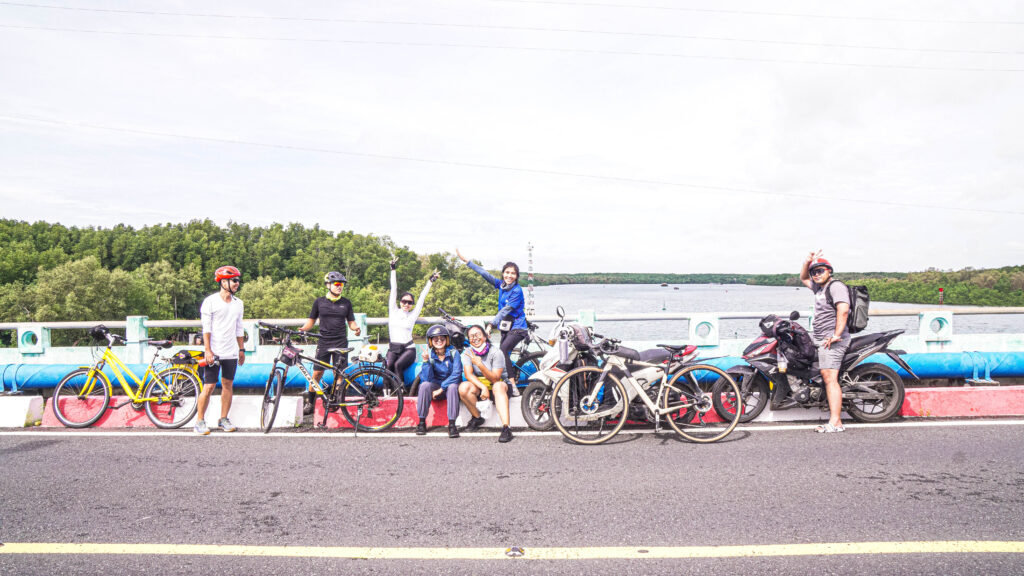
Cycling to Can Gio offers a unique and enriching experience that combines physical challenges with the beauty of Vietnam’s diverse landscapes. The journey is a refreshing contrast to the bustling streets of Ho Chi Minh City, allowing you to explore quiet roads, scenic views, and hidden gems that few tourists get to see. The route takes you through charming local villages, lush mangrove forests, and pristine coastal areas, giving you an up-close look at the serene, unspoiled beauty of southern Vietnam.
Beyond the physical enjoyment, Can Gio is a haven for nature and history lovers. It is renowned for its rich wildlife, including the famed Monkey Island and the Can Gio Bird Sanctuary, where birdwatchers and animal enthusiasts can encounter unique species in their natural habitats. For history buffs, the island’s connection to the Vietnam War adds another layer of intrigue, offering an opportunity to explore traditional fishing villages that have retained their cultural heritage and livelihoods for centuries.
Whether you’re seeking to connect with nature, push your physical limits, or delve into the cultural and historical significance of the region, cycling to Can Gio gives you the chance to experience the true essence of Vietnam. It’s an adventure that combines breathtaking views, cultural discovery, and the satisfaction of a day well spent.
Key Highlights of Cycling to Can Gio:
- Explore lush mangrove forests and spot unique wildlife.
- Visit historical sites linked to Vietnam’s rich past.
- Experience traditional fishing villages and the coastal lifestyle.
Cycling to Can Gio is the perfect blend of adventure, natural beauty, and cultural exploration, offering something for every type of traveler. Whether you’re captivated by the wildlife, the tranquil landscapes, or the personal challenge, this adventure will leave a lasting impression.
What You Need to Know Before Your Trip
When to Visit Can Gio
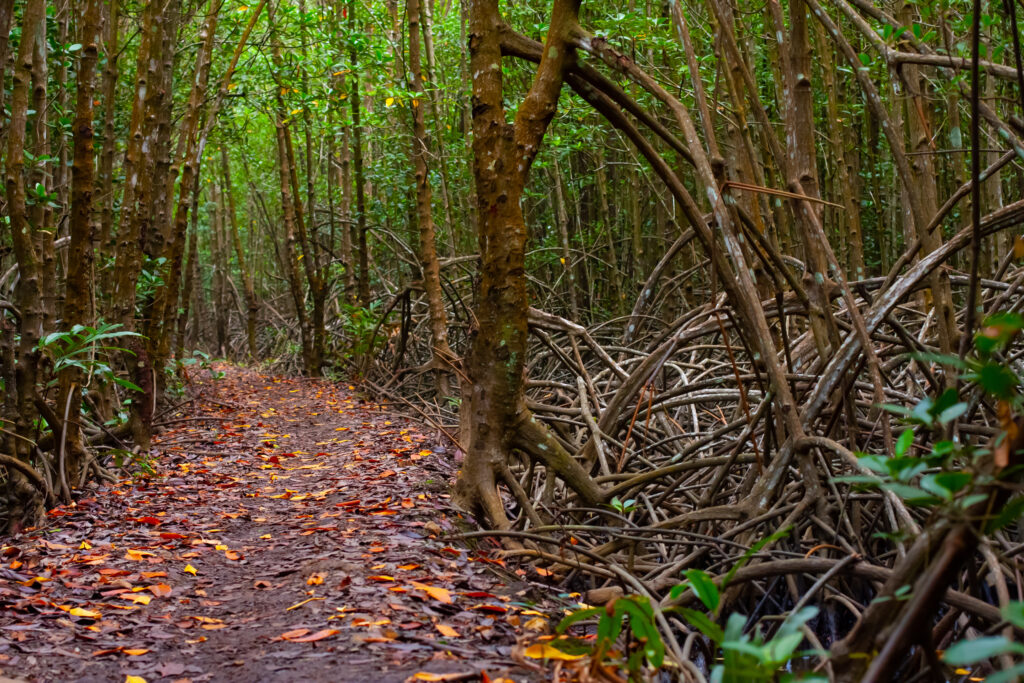
The best time to cycle to Can Gio is during the dry season, which runs from December to April. During these months, the skies are clear, and the temperatures are pleasant—ideal for cycling and exploring the natural beauty of the island. The dry season allows for outdoor activities like cycling, trekking, and exploring the mangroves with less concern for rain and muddy trails.
However, the wet season, from May to November, brings heavy rains and humidity. While the rains can make the island’s greenery even more lush and vibrant, they also make some parts of Can Gio, particularly the mangrove trails, difficult to navigate. If you’re adventurous and don’t mind a bit of rain, you can still enjoy the island’s natural beauty but be prepared for muddy paths and occasional downpours.
Cycling Tips for Can Gio
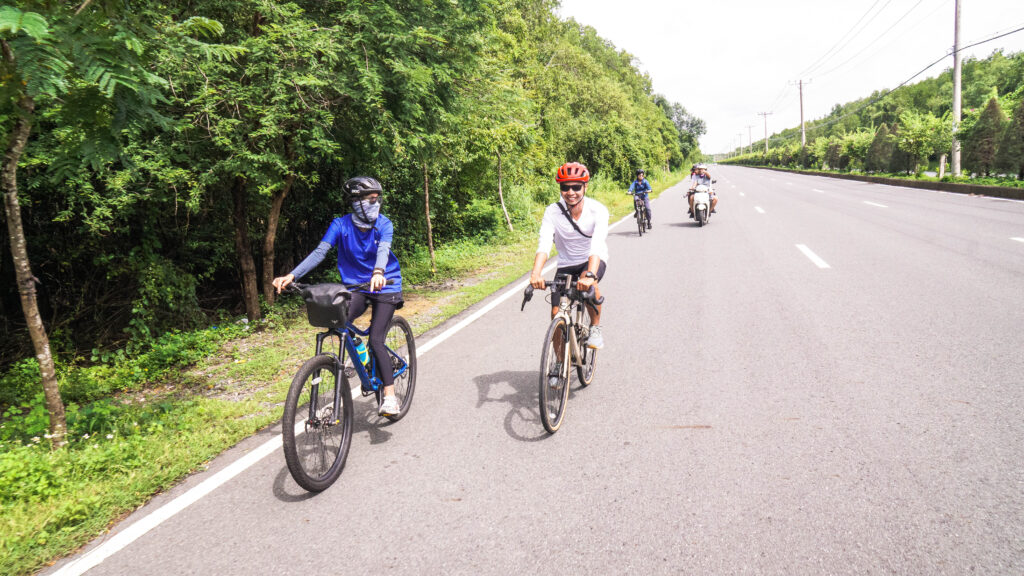
To ensure your trip goes smoothly, it’s important to be well-prepared. Here are some essential tips to help make your cycling adventure to Can Gio enjoyable, safe, and memorable:
Number 1: Bike Preparation
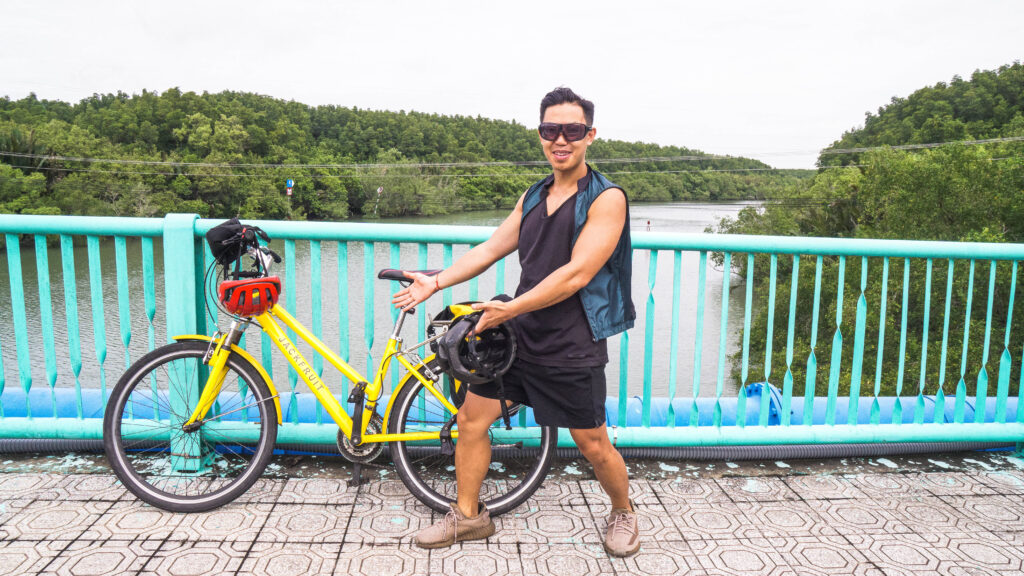
Before embarking on the ride, ensure that your bike is in optimal condition. Can Gio’s roads, while scenic, can be quite remote in places, so it’s essential to avoid any mechanical issues along the way.
- Tires: Check the tire pressure and make sure your tires are in good condition to handle both paved and rustic roads.
- Brakes: Test your brakes to ensure they’re functioning properly, as you’ll need them to navigate through the varied terrain.
- Chain: Ensure the bike chain is well-lubricated and operating smoothly.
- Repair Kit: Carry a small repair kit that includes essentials like a spare tube, pump, and multi-tool. If something goes wrong on the road, you’ll have the tools to fix it.
Number 2: Fitness Level
Though the route to Can Gio is relatively flat, it is still a long ride. Be sure that you are comfortable with cycling extended distances before attempting the trip. If you’re not used to long rides, consider doing some shorter practice rides in the days leading up to your Can Gio adventure to build endurance.
Number 3: Navigation
While the route to Can Gio is mostly straightforward, it’s still a good idea to have a GPS or a printed map handy. You’ll be cycling through rural areas, and while the roads are quiet, it’s easy to take a wrong turn if you’re not familiar with the area.
Number 4: Hydration and Snacks
The tropical heat in southern Vietnam can take a toll on your body, especially during extended physical activity. Staying hydrated is crucial to avoid dehydration, particularly in the midday sun. Pack plenty of water and consider bringing a hydration backpack if you don’t want to stop frequently.
- Snacks: Bring along energy-dense snacks like protein bars, nuts, or dried fruits. While there are places to stop for food, these snacks can help sustain you during the longer stretches without access to stores or cafés.
Number 5: Sun Protection
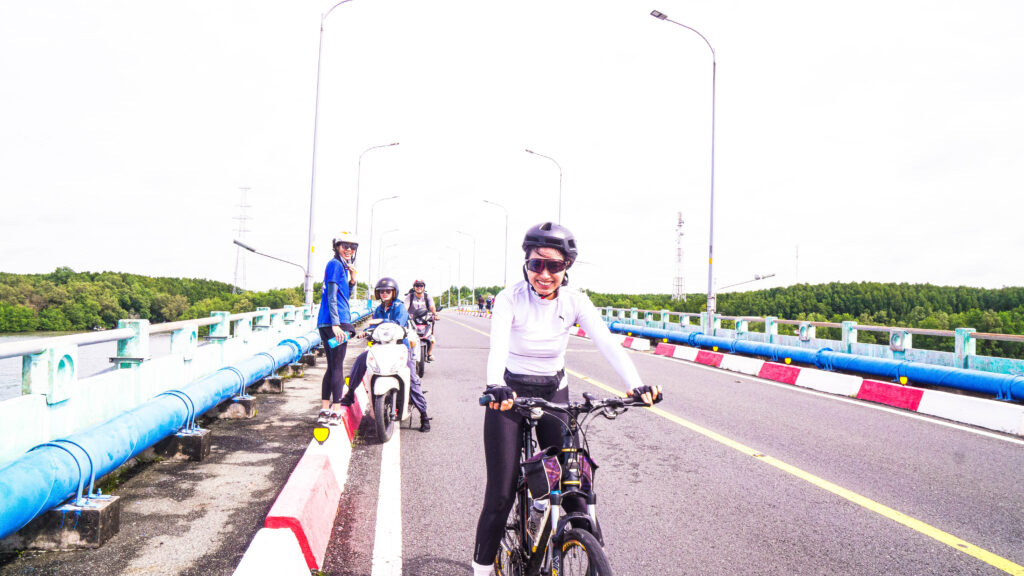
The roads in Can Gio offer little shade, so protecting yourself from the sun is critical. Apply a high SPF sunscreen before you start the ride and reapply throughout the day, especially if you’re sweating. Sunglasses and a wide-brimmed hat or cycling cap are also recommended to protect your eyes and face from the harsh sunlight.
- Clothing: Wear breathable, long-sleeved cycling clothing to protect your skin from UV rays without overheating. Lightweight and moisture-wicking fabrics are ideal.
Number 6: Timing and Weather Considerations
- Start Early: Aim to leave around 6:00 AM to make the most of the cooler morning air. By starting early, you’ll avoid the midday heat, which can be intense, particularly from 10:00 AM onwards.
- Seasonal Weather: The dry season, from December to April, is the best time to cycle to Can Gio. During this period, you can expect pleasant weather and clear skies, perfect for a full day of outdoor exploration. The wet season (May to November) can make the trails muddy and harder to navigate, but the vibrant greenery and fewer tourists can still make it a worthwhile adventure.
Number 7: Rest Stops
Plan for rest stops along the way, especially after crossing the ferry. Stopping for breakfast or a snack at a local café will help you regain your energy for the remainder of the trip. While cycling through the mangroves, take breaks as needed, but always ensure you are parked in a safe, shaded area to avoid heat exhaustion.
Number 8: Insect Repellent
Given the island’s proximity to wetlands and mangrove forests, mosquitoes and other insects can be an issue, particularly during the rainy season. Be sure to apply insect repellent, especially during the early morning and late afternoon when mosquitoes are most active.
Suggested Timeline for Your Can Gio Cycling Adventure
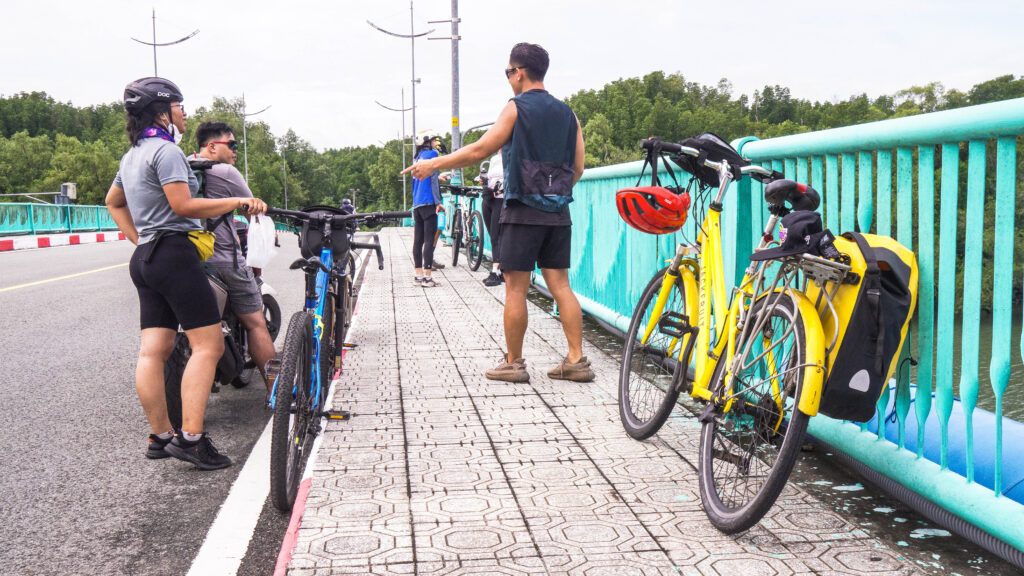
This timeline outlines a general plan for a day of cycling from Ho Chi Minh City to Can Gio. Feel free to adjust based on your pace, fitness level, and how long you wish to spend at each stop.
6:00 AM – Departure from Ho Chi Minh City
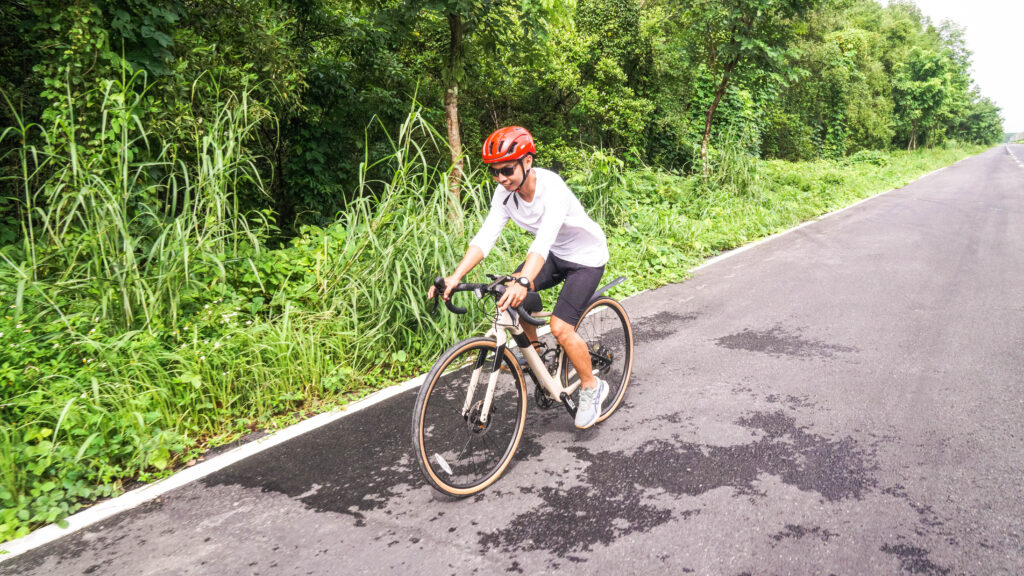
Start early to avoid the rising heat and morning traffic. Leaving at 6:00 AM allows you to enjoy the cooler morning air and navigate the roads with fewer vehicles. Cycle towards the Binh Khanh Ferry, roughly 18 kilometers from the city center. This stretch will take you through suburban roads, where traffic is moderate but manageable for cyclists.
7:00 AM – Arrive at Binh Khanh Ferry
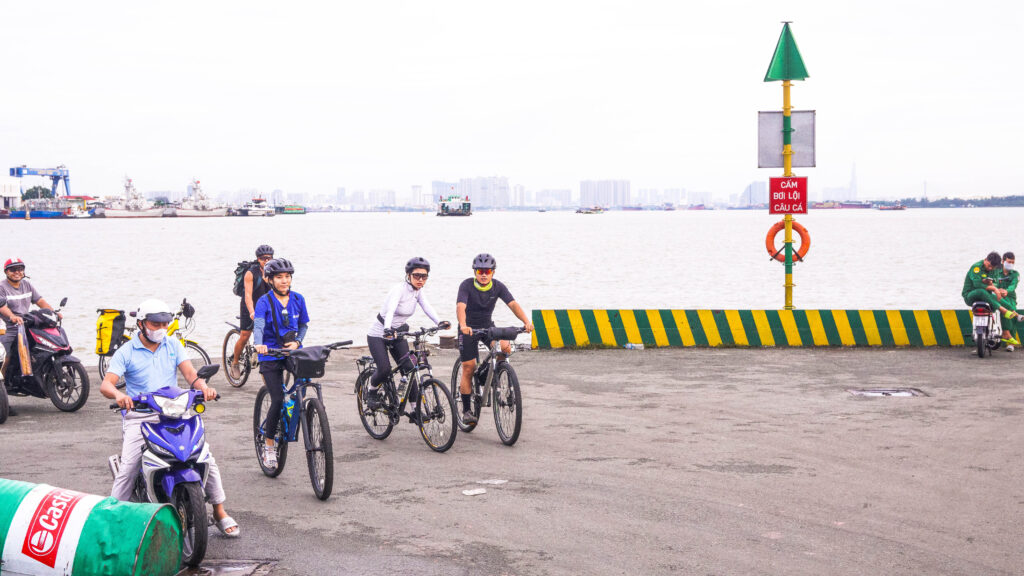
The Binh Khanh Ferry is your gateway to Can Gio. Once you arrive, enjoy a short break as you wait for the ferry to cross the Saigon River. The ride itself lasts about 15 minutes, offering scenic views of the water and surrounding greenery, a welcome break after the first leg of your journey.
Pro Tip: Keep some small changes handy, as the ferry fee is only around 1,000 VND per person and bike.
7:30 AM – Arrive in Can Gio
Upon disembarking, you’ll immediately notice a change in the atmosphere. The pace slows, the scenery becomes more picturesque, and traffic thins out. The road to Can Gio is lined with mangrove forests and peaceful fishing villages, offering a stark contrast to the bustling city you left behind.
7:30 AM – 8:00 AM – Breakfast Stop

Before continuing your adventure, stop at a local café for a traditional Vietnamese breakfast. Can Gio is dotted with small eateries that serve delicious dishes like banh mi, pho, or hu tieu. Pair your meal with a glass of ca phe sua da (Vietnamese iced coffee with condensed milk) to recharge for the next leg of your ride.
Pro Tip: Look for small, local cafés frequented by residents. These hidden gems offer authentic flavors and a truly local experience.
8:00 AM – 10:30 AM – Cycling Through Mangrove Forests
One of the highlights of your Can Gio adventure is cycling through its lush mangrove forests. The road winds through dense greenery, offering a serene ride far removed from the hustle and bustle of Saigon. The air is fresher here, and you’ll likely encounter few vehicles, giving you plenty of space to enjoy the ride.
The route from the ferry to Can Gio Town is around 20 kilometers and takes you through a mix of paved roads and rustic paths. Along the way, you’ll pass by saltwater swamps, traditional fishing villages, and dense mangrove forests. Keep an eye out for wildlife—birds and monkeys are commonly spotted in this area.
Pro Tip: The sun can be harsh, even during the morning hours. Be sure to apply sunscreen, wear a wide-brimmed hat or helmet, and drink water regularly to stay hydrated.
10:30 AM – 12:00 PM – Visit Monkey Island
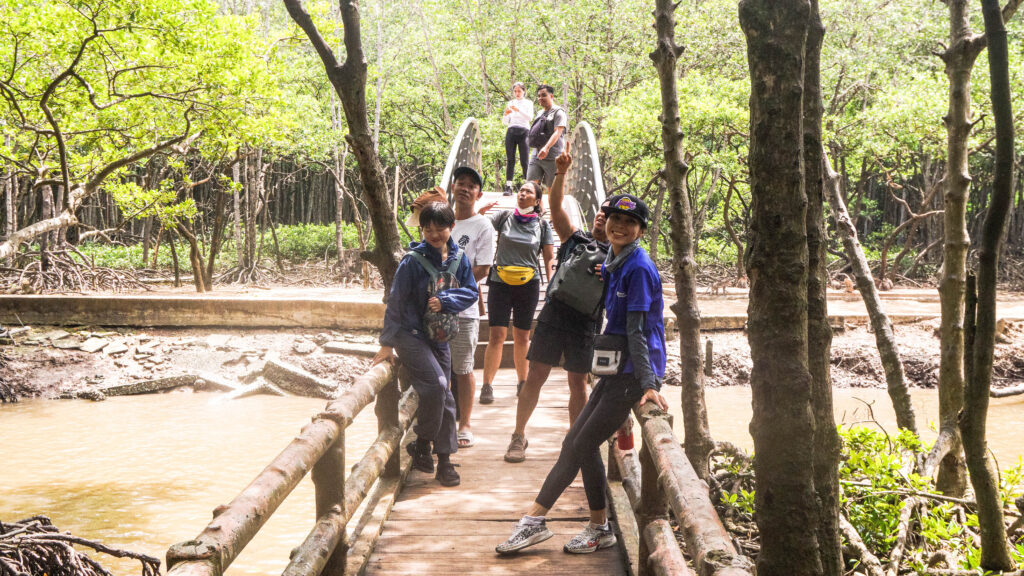
After cycling through the scenic roads, take a break and explore Monkey Island, one of Can Gio’s most famous attractions. Home to a playful population of macaques, this stop offers a fun and interactive experience for visitors. However, be mindful—while the monkeys are entertaining, they’re also known for their mischief and may snatch food or small belongings if you’re not careful.
Beyond the monkeys, Monkey Island also hosts the Can Gio Mangrove Biosphere Reserve, where you can take a short walk through the mangrove forest on elevated walkways and learn about the local ecosystem.
Pro Tip: Avoid feeding the monkeys, as this can encourage aggressive behavior. Instead, bring snacks for yourself after the ride, and enjoy a peaceful break amid the island’s natural beauty.
12:00 PM – 2:00 PM – Lunch and Rest in Can Gio Town
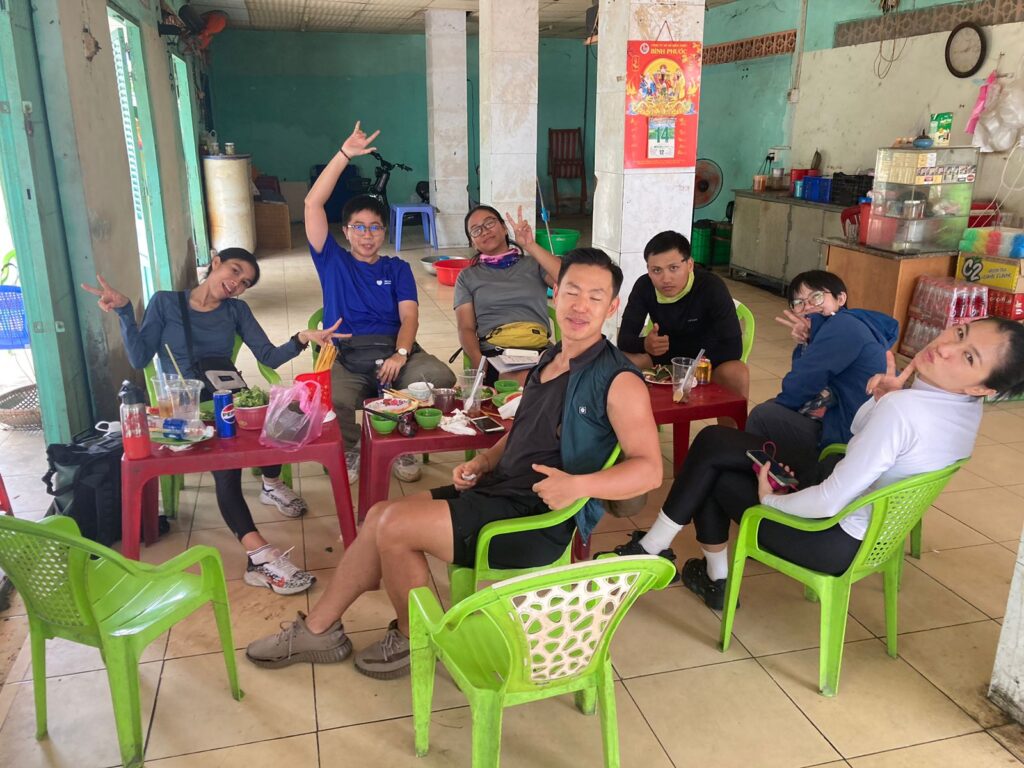
After a full morning of cycling, head to Can Gio Town for a much-needed break and lunch. This small town is known for its fresh seafood, with several local restaurants serving up dishes made from the daily catch. A popular local specialty is banh khot, a crispy, savory mini pancake made from rice flour and coconut milk, topped with shrimp, and served with fresh herbs and fish sauce. Enjoying banh khot gives you a taste of the Vietnamese street food while replenishing your energy.
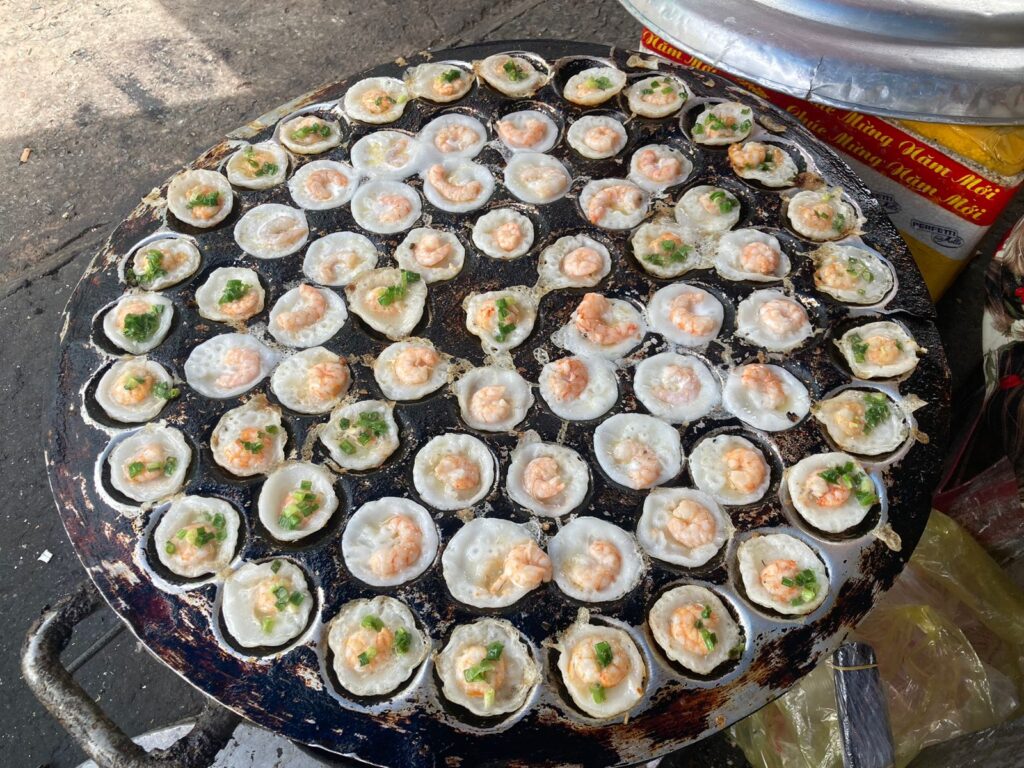
Pro Tip: Visit the local market to grab a refreshing coconut or some tropical fruit to cool off after your meal.
2:00 PM – Return to Ho Chi Minh City
After lunch, begin your journey back toward the ferry. The return ride, though still around 20 kilometers, will feel easier after a good meal and some rest. The roads are once again quiet and peaceful, giving you one last opportunity to enjoy the tranquil surroundings before returning to the city.
Once you’ve crossed the ferry back to Ho Chi Minh City, you’ll find the roads slightly busier as you get closer to the city center. If you’re too tired, consider taking a taxi or bus for the last leg of the journey. However, many cyclists find that completing the final part of the ride brings a sense of accomplishment and a satisfying end to the day.
Cycling to Can Gio Island is more than just a physical challenge—it’s a chance to step away from the fast pace of city life and immerse yourself in Vietnam’s natural beauty. The peaceful roads, lush mangrove forests, and fascinating wildlife create a sense of adventure that is both exhilarating and deeply satisfying. Whether you’re exploring Monkey Island, indulging in local delicacies like banh khot, or simply enjoying the quiet scenery, this journey offers a refreshing escape from the urban grind.
For first-time cyclists, this adventure provides the perfect blend of challenge and reward, leaving you with memories of Vietnam’s serene landscapes and the satisfaction of conquering a unique and off-the-beaten-path destination.
Exploring Can Gio: Things to Do and See Beyond Cycling
Can Gio Island, often called the “green lung of Saigon,” is celebrated for its vast mangrove forests, abundant wildlife, and rich ecological diversity. While cycling is one of the best ways to explore the island’s scenic beauty, there’s much more to discover beyond the bike trails. Whether you’re staying overnight or simply want to experience more of the local culture and natural wonders, here are some must-see activities to enhance your Can Gio adventure.
1. Visit the Mangrove Biosphere Reserve
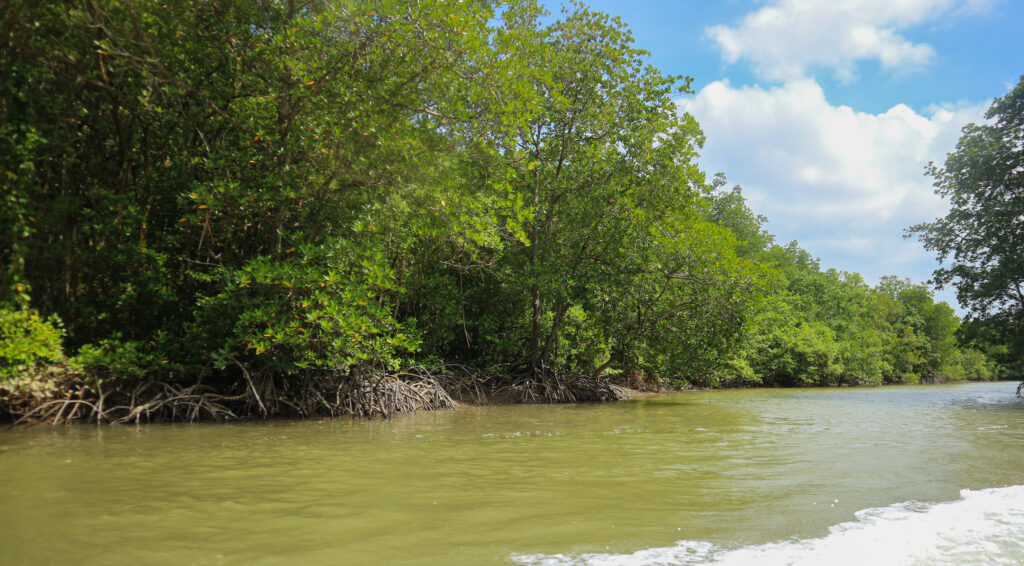
The Can Gio Mangrove Biosphere Reserve is a UNESCO-recognized site and an ecological treasure trove. This vast area of saltwater marshes and mangrove forests is home to over 200 species of wildlife, from rare birds to various reptiles and aquatic creatures. Taking a boat ride through the lush mangroves offers a tranquil escape into nature, where you can see towering saltwater trees and an array of unique flora and fauna.
This peaceful environment is perfect for those seeking a break from urban life, offering the chance to spot wildlife like monkeys, birds, and even crocodiles. As you glide along the waterways, you’ll experience the serene beauty of the mangroves, listening to the calls of birds and the quiet hum of the forest.
Pro Tip: Hiring a guide can add depth to your visit, as they can offer insights into the reserve’s delicate ecosystem, conservation efforts, and the importance of mangroves in protecting coastal areas from erosion and storms.
2. Explore Vam Sat Eco Park
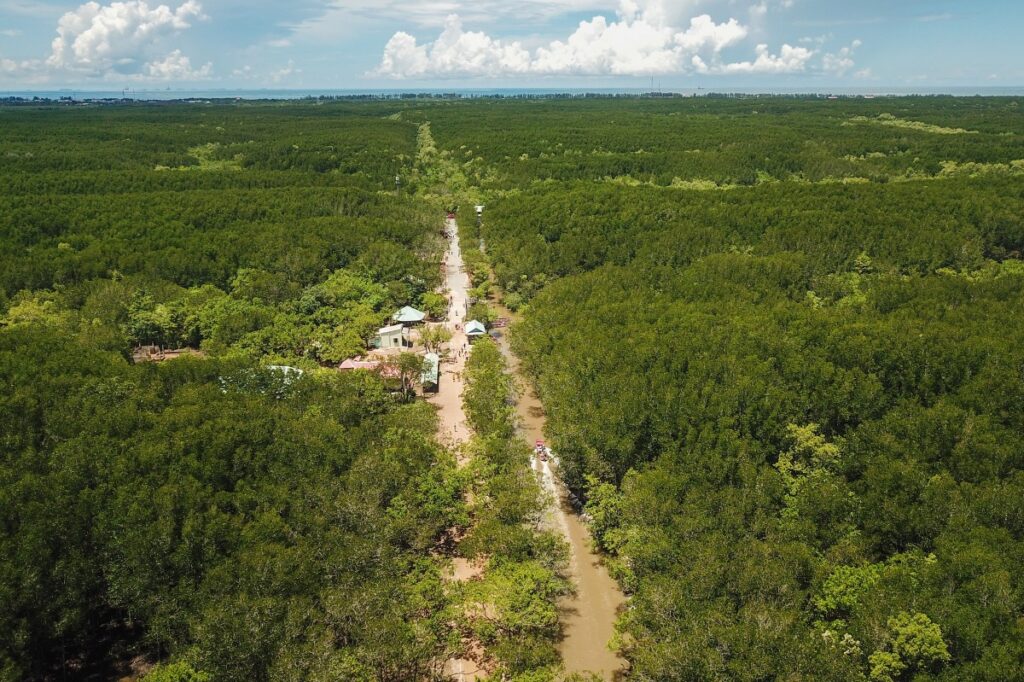
Nestled within the Can Gio biosphere, Vam Sat Eco Park is a favorite destination for eco-tourism enthusiasts. This expansive park offers a range of activities that appeal to both nature lovers and adventurers alike. One of its highlights is the crocodile farm, where you can observe these fascinating creatures up close. For those seeking a bit of thrill, there’s even the option to participate in safe “crocodile fishing,” where you can bait the crocodiles from a secure platform—a memorable experience for those who like a little excitement.
Beyond crocodiles, Vam Sat is home to a bird sanctuary that attracts thousands of migratory birds each year. The park’s bat lagoon is another must-see. As you paddle quietly through the lagoon, surrounded by bats overhead, you’ll feel a deep connection with this eerie yet peaceful part of the ecosystem.
For panoramic views of the surrounding landscape, climb the observation tower, where you can take in breathtaking views of the vast, green mangrove forests below.
Pro Tip: Plan your visit in the early morning or late afternoon to enjoy the cooler weather and better chances of spotting wildlife.
3. Check Out Hang Duong Market
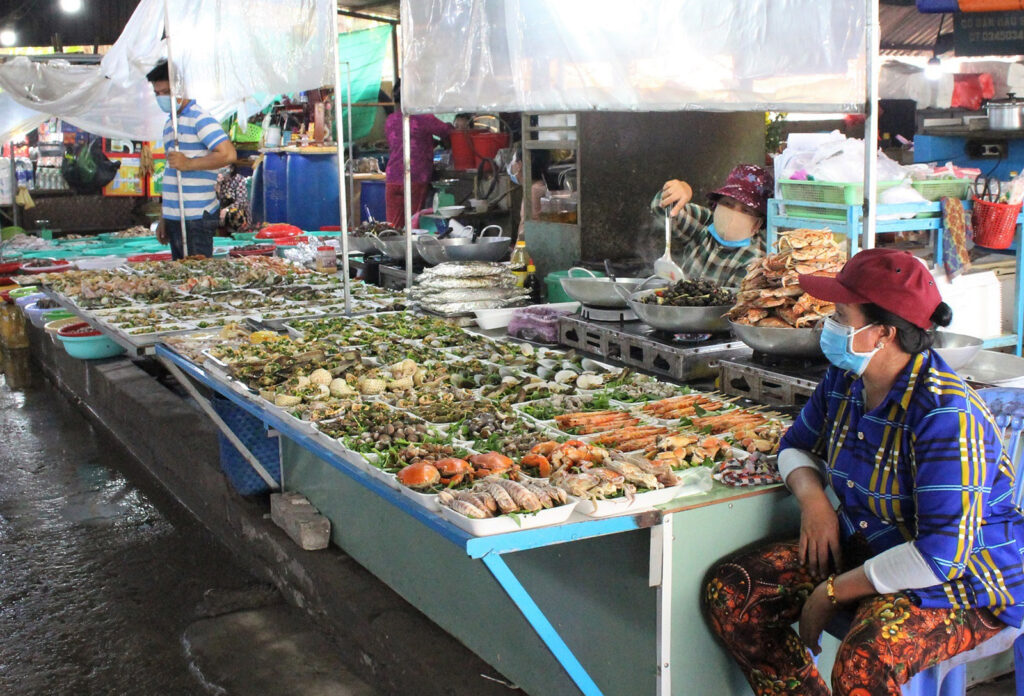
For an authentic taste of Can Gio’s culinary offerings, Hang Duong Market is a must-visit. This bustling seafood market is packed with fresh produce from the nearby waters, including prawns, squid, clams, and other shellfish. Not only can you purchase fresh seafood, but many of the market vendors will also grill or cook it for you on the spot, giving you a truly fresh and flavorful dining experience.
This market is a sensory delight, with the smells of freshly grilled seafood mingling with the lively chatter of locals. It’s a perfect place to stop and refuel during your exploration of Can Gio, whether you’re looking for a quick snack or a more substantial meal.
Tip: If you’re cycling, Hang Duong Market is a great place to take a break and sample some local delicacies, like grilled clams or fish skewers, before continuing your adventure. It’s also an ideal spot to grab fresh seafood for a later picnic on the beach.
4. Experience Monkey Island
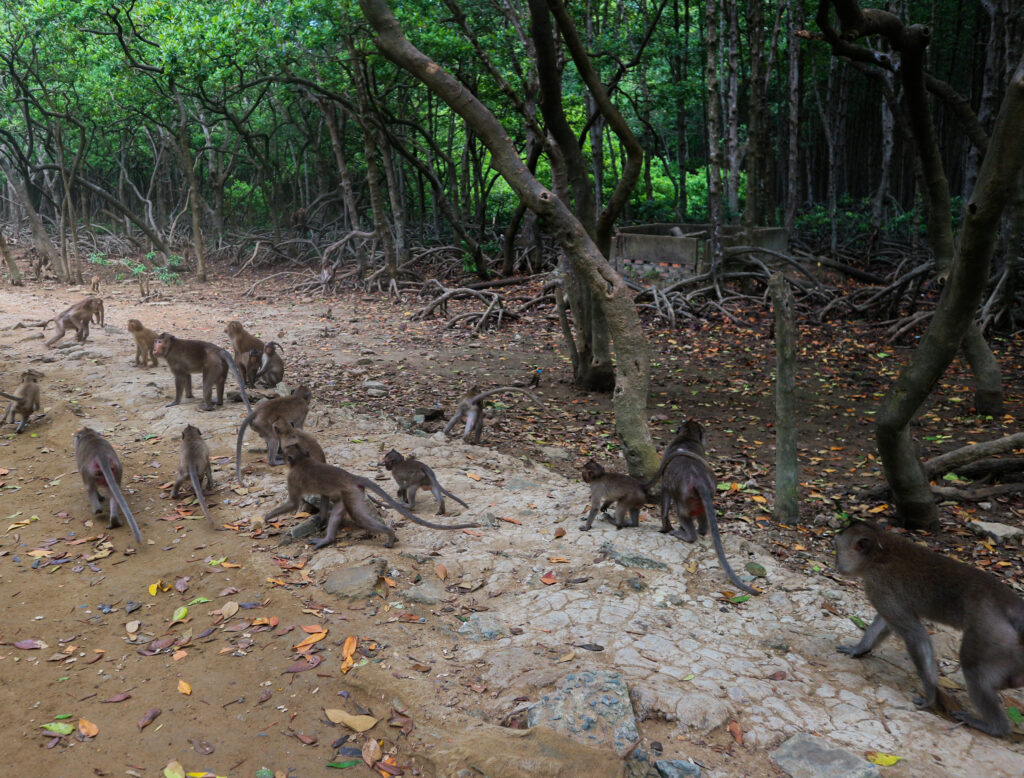
A visit to Can Gio isn’t complete without experiencing Monkey Island, where hundreds of wild macaques roam freely in the mangroves. These cheeky monkeys are entertaining to watch, but you’ll need to keep an eye on your belongings, as they are known for their playful—and sometimes mischievous—behavior.
Beyond the monkey antics, the area surrounding Monkey Island offers scenic walking paths that lead through the mangrove forest, giving you the chance to immerse yourself in the region’s natural beauty. Boat tours are also available, allowing you to explore the quiet mangroves and discover more about this unique ecosystem.
Warning: While the monkeys are fun to watch, they have a habit of snatching food and small items like hats or sunglasses, so make sure your valuables are secured.
5. Bird Watching

For bird lovers, Can Gio is a paradise, especially in areas like Vam Sat. The wetlands and mangrove forests attract a wide variety of bird species, including herons, egrets, and migratory birds from far-flung locations. Birdwatching tours are available for those who want expert guidance, ensuring you get the most out of your experience.
Whether you’re an avid birder or a curious nature enthusiast, watching the birds in their natural habitat is both relaxing and awe-inspiring. The early morning or late afternoon hours offer the best chance of spotting a wide array of species.
Pro Tip: Bring binoculars and a good camera with a zoom lens to capture stunning images of these graceful birds in flight or resting among the mangroves.
6. Relax on Can Gio Beach
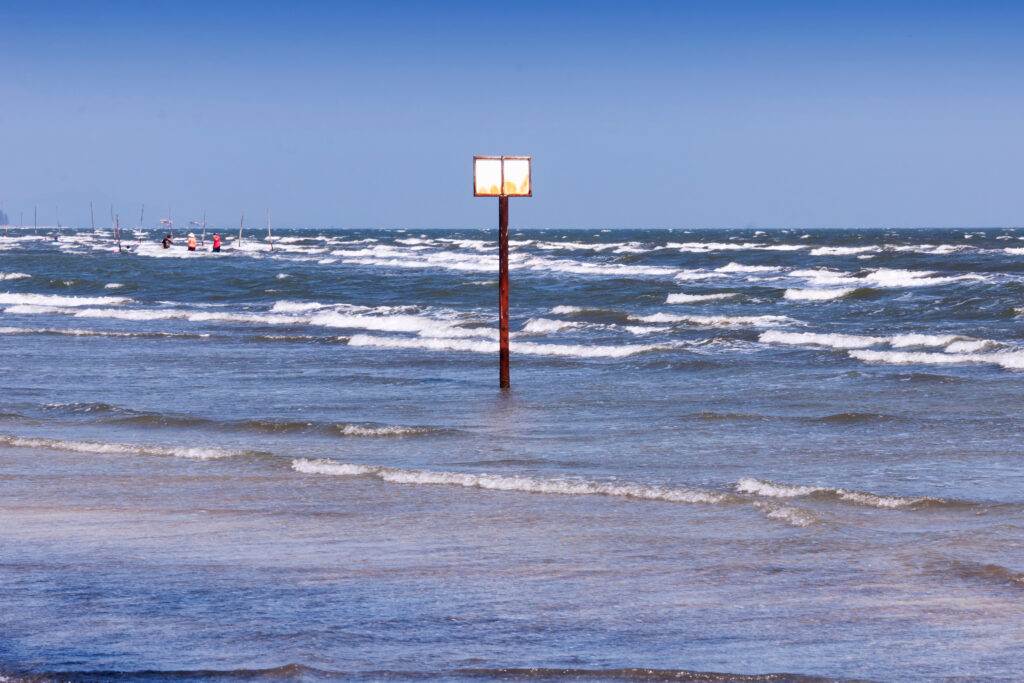
While not as famous as some of Vietnam’s more touristy beaches, Can Gio Beach offers a peaceful and serene retreat, perfect for unwinding after a day of cycling and exploring. The unspoiled coastline provides a quiet spot for a swim, a picnic, or simply lounging by the water. The beach is rarely crowded, making it an excellent location for some downtime, far removed from the noise of city life.
If you prefer a more active beach experience, you can take long walks along the shoreline or enjoy a seafood meal at one of the beachside stalls.
Pro Tip: Weekdays are best for visiting the beach if you’re looking for solitude, as it’s less crowded and provides a more relaxing atmosphere.
7. Rung Sac Guerilla Base

For those particularly interested in Vietnam’s military history, the Rung Sac Guerilla Base is a must-see destination. Located deep in the mangrove forests, this base played a significant role during the Vietnam War, providing the Viet Cong with a strategic location from which to launch operations. The dense jungle offered natural protection, allowing the soldiers to carry out their missions in relative secrecy.
Today, the site serves as a reminder of the challenges faced by guerilla fighters. Visitors can see war relics, memorials, and learn about the resilience and ingenuity of the Viet Cong forces.
Guided Tours: A guided tour is highly recommended for anyone wanting to gain a deeper understanding of the base’s historical significance, as knowledgeable guides can share personal stories and historical context that make the visit more impactful.
8. Explore local food at Can Thanh town
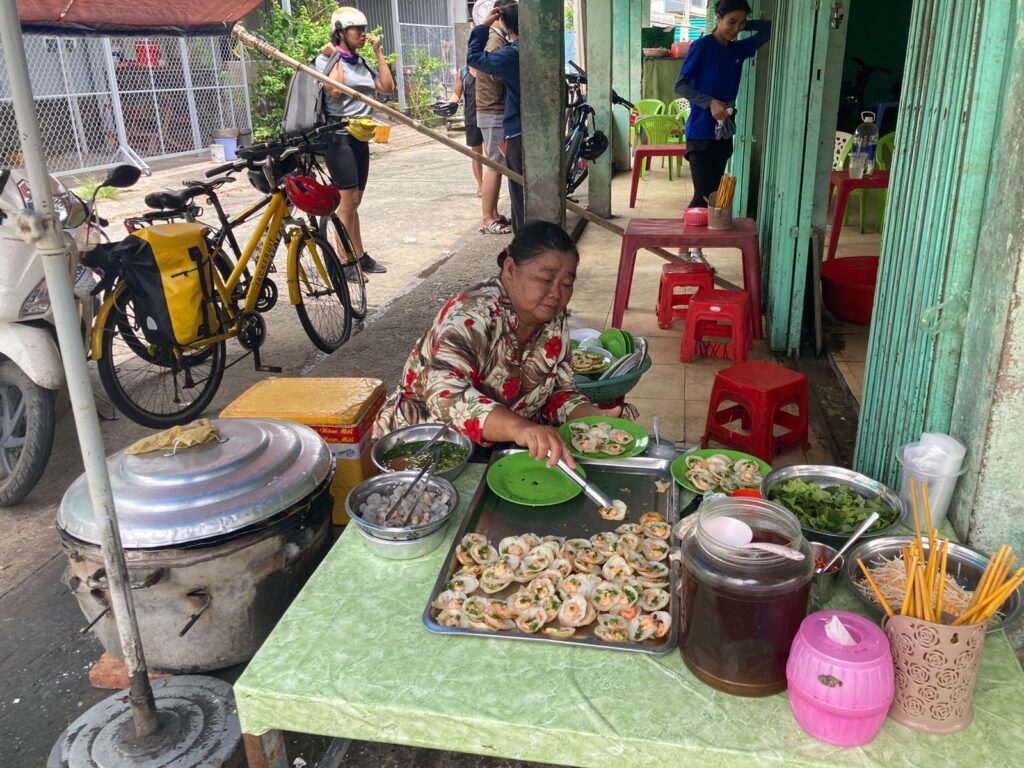
Can Thanh Town, located in the heart of Can Gio, is the perfect place for food lovers to discover authentic Vietnamese coastal cuisine. The town offers a wide range of fresh seafood, brought in daily from the surrounding waters. Seafood stalls and small restaurants are abundant, offering dishes like grilled prawns, clams, squid, and various fish cooked to perfection.
One of the specialties you must try is banh khot, small, crispy pancakes made from rice flour, coconut milk, and topped with fresh shrimp. These pancakes are served with herbs and a dipping sauce made of fish sauce, lime, and chili. It’s a popular street food dish that embodies the simplicity and freshness of Vietnamese cuisine. Enjoying a meal here gives you an authentic taste of Can Gio’s coastal offerings, making it a culinary stop you shouldn’t miss.
Pro Tip: Visit the local seafood market early in the morning to witness the bustling activity as fishermen bring in their fresh catch. You can even pick your own seafood and have it cooked on the spot
9. Try Cá Thòi Lòi Trộn Lìm Kìm in Can Gio

A true delicacy unique to Can Gio is the cá thòi lòi trộn lìm kìm. This dish is a combination of cá thòi lòi, a mudskipper fish known for its unique ability to “walk” on land, and lá lìm kìm, a type of edible vine. The lìm kìm vine is soft, with small leaves, and is often found growing amongst low shrubs or along fences. Sometimes, you’ll find it growing in the dense Đước forests near the shorelines of Can Gio.
Cá thòi lòi is a species from the goby family, commonly found in river mouths, estuaries, and coastal waters. It thrives in countries such as Australia, Bangladesh, Cambodia, India, Indonesia, Malaysia, the Philippines, Seychelles, Thailand, and Vietnam. The fish is known for its distinct flavor, which combines well with the slightly sour and refreshing taste of the lá lìm kìm.
In this dish, the cá thòi lòi is usually grilled or steamed and mixed with the fresh leaves of the lìm kìm vine, along with local spices. It’s a delightful dish with a harmonious blend of textures—firm fish meat combined with the soft and tangy leaves. This unique combination is not only a reflection of the rich biodiversity of Can Gio’s mangroves but also an example of the region’s creativity in its culinary traditions.
Pro Tip: If you’re curious about the local culture, ask a local chef or vendor how they prepare this dish. Many of them will be happy to share their secrets and explain how they source the fresh ingredients from the surrounding area.
Whether you’re cycling through the mangroves, visiting the bustling Hang Duong Market, or relaxing on Can Gio’s quiet beach, this island offers a wide array of experiences that cater to adventurers, nature lovers, and history enthusiasts alike. Can Gio is not just a getaway from the city—it’s a journey into Vietnam’s rich natural and cultural heritage, providing a well-rounded adventure for all types of travelers.
Let’s Wrap It Up
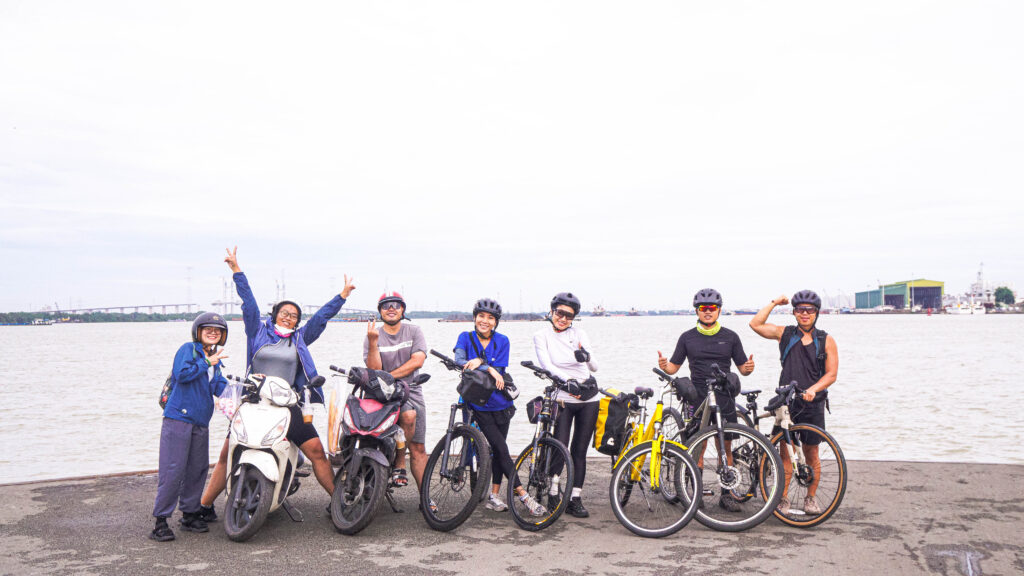
Cycling to Can Gio Island is a perfect getaway for those who enjoy adventure, nature, and a break from the city’s fast pace. This trip offers the chance to explore Vietnam’s rich biodiversity while challenging yourself with a long but rewarding ride. From the scenic roads lined with mangrove forests to the playful monkeys of Đảo Khỉ, Can Gio provides a unique experience for any cyclist.
Whether you’re a seasoned rider or a first-time adventurer, this guide equips you with everything you need to prepare for an unforgettable cycling journey to one of southern Vietnam’s most peaceful destinations. If you’re short on time or would like some help organizing your trip, contact us here and we’ll tailor a custom cycling tour to Can Gio for you and your team.
Other articles for exploring Ho Chi Minh City:
- 25 unusual things to do in Ho Chi Minh
- 12 must-do tours in Ho Chi Minh
- 26 highlights in Ho Chi Minh’s Chinatown
- 20 Things To Do In Ho Chi Minh City At Night
- 25 Things to Do with Kids in Ho Chi Minh City
Ho Chi Minh City Cycling Tour In Ho Chi Minh City (Saigon) – Vietnam
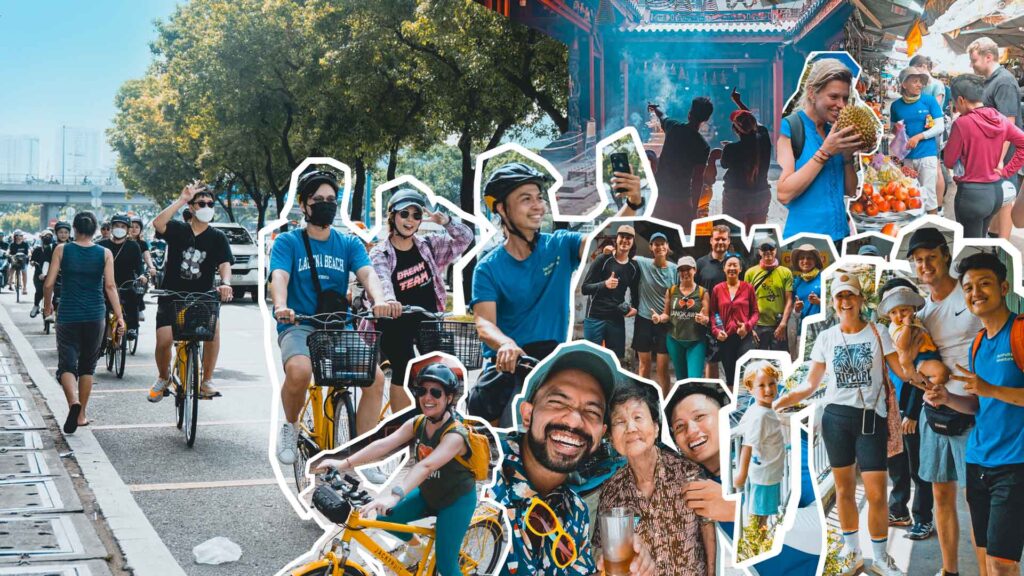
At Jackfruit Adventure, we organize Ho Chi Minh City Cycling Tour and Team Building Ho Chi Minh. With a deep knowledge of Saigon city and local connections, we believe we can give you an awesome bonding time together. Contact us today if you have any requests or questions to prepare a trip for your team to bond in Ho Chi Minh – Vietnam.




